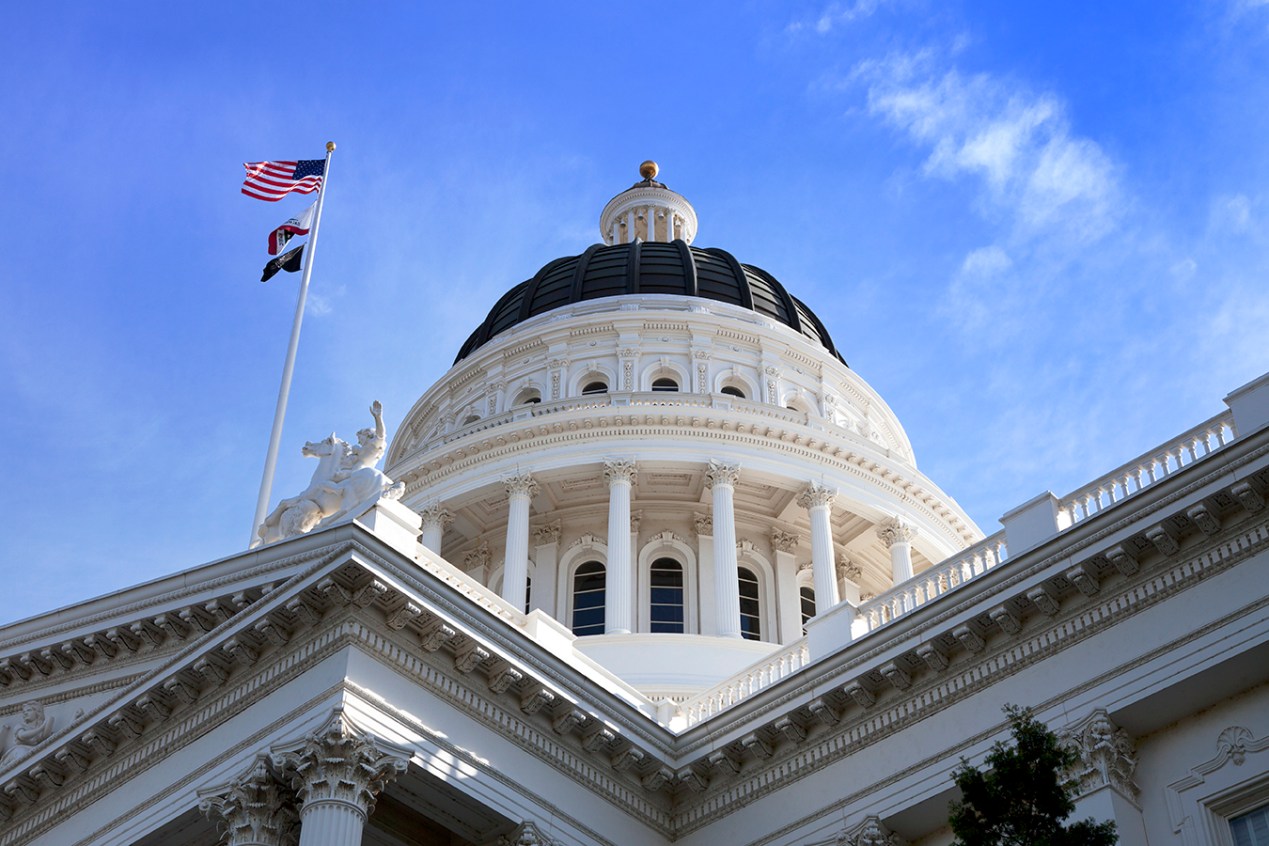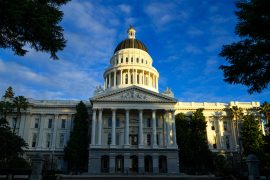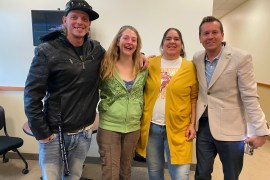SACRAMENTO, Calif. — After more than a decade of fruitless entreaties from public health advocates, Democratic lawmakers have secured a landmark agreement that promises $300 million a year in new state funding to fortify and reimagine California’s hollowed-out public health system, a complex network of services shouldered largely by the state’s 61 local health departments.
The deal, outlined this week as the Democratic-controlled legislature approved a record $262.6 billion state budget for fiscal year 2021-22, marked a dramatic reversal for Gov. Gavin Newsom, who had rebuffed requests the past three years to bolster annual spending on public health, arguing that federal funding would suffice. At Newsom’s insistence, the infusion for public health won’t kick in until July 2022.
What persuaded the first-term Democrat to change course, according to people involved in the negotiations, was an unprecedented public health campaign buttressed by powerhouse lobbyists and organized labor. The state’s largest public employee union, the Service Employees International Union, California, in January joined health care leaders to create a coalition called “California Can’t Wait,” mounting a fierce lobbying effort on behalf of public health, a core government function that for years has gone without a voice in California’s Capitol corridors.
Their target was Newsom, and they pressed their case with his Cabinet officials, advisers and the public, even as he was navigating seething resentment in some communities over covid-related business closures and a burgeoning Republican-driven recall effort to oust him from office.
“We knew we’d have to fight,” said Tia Orr, the top lobbyist for SEIU in California, which represents 750,000 members, including health care workers, janitors, and city, county and state employees, among others. “I hate that it took a crisis, but covid-19 allowed us to push back collectively, and we all realized that we’d have to get louder than we’ve ever been on public health.”
From January to April, union leaders, public health advocates and the trade groups representing local health officials held more than 40 in-person and video meetings with state lawmakers to lay out how years of shrinking budgets had left them without the personnel, lab capacity and basic infrastructure needed to carry out critical public health functions. Disinvestment had left counties unprepared for the pandemic, they argued, and systems essential to tracking and controlling an array of infectious and chronic diseases had been decimated.
In the Inland Empire county of San Bernardino, for instance, officials detailed the ground lost tackling problems like congenital syphilis and opioid misuse even before the covid response sapped resources. Officials in Mono County in the eastern Sierra explained they had no public health lab and just one communicable disease nurse to conduct contact tracing for a county of 14,000 people.
“A lot of what we did is just educate [State Senate and Assembly] members about what public health does,” said Kim Saruwatari, Riverside County’s director of public health. “They were interested in the work we were doing and receptive to the conversation.”
Also critical to the effort: County health officials reached outside their inner circle, hiring veteran Sacramento public relations firm Paschal Roth Public Affairs, an influential power broker whose strategists represent multiple deep-pocketed interest groups, including SEIU.
“Look, we had the key ingredients for a winning campaign: a razor-sharp message, an incredible coalition and an undeniable sense of timing,” said Mike Roth, who operates the firm with his partner, Nikki Paschal. “After what we experienced last year with covid, no one could argue that the stakes weren’t life or death. Public health officials knew they needed to approach this differently.”
Epidemiologists, public health nurses and other county workers who weren’t used to the spotlight became the face of the operation. As Newsom and lawmakers negotiated the budget behind closed doors, the campaign launched an aggressive Twitter campaign that accused Newsom of neglecting public health and extolled the two lawmakers who championed the budget request in the Capitol, state Sen. Richard Pan (D-Sacramento) and Assembly member Jim Wood (D-Santa Rosa), who chair legislative health committees.
News coverage soared, with headlines reflecting the political battle and editorial pages weighing in on the side of public health: “If Newsom invested in public health agencies before covid, how many could have been saved?” wrote The Sacramento Bee’s Editorial Board.
“I don’t think a lot of people understood the devastation that was happening — it really has been this quiet erosion of public health funding,” said Michelle Gibbons, executive director of the County Health Executives Association of California. “We had to get people to raise their hands and say ‘We care,’ and this campaign helped us use our voice and tell our story in a way that we haven’t done before.”
Pan, a pediatrician who has unsuccessfully pushed for greater public health investment for years, said the issue never before had harnessed big-time lobbying power.
“As much as everyone loves to talk about prevention and public health, that’s a really hard thing to get credit for, because when everything goes right, nothing happens. And that’s the big challenge for public health,” Pan said. “Covid highlighted how important this investment is, because it really revealed the deficiencies we have, and it certainly pushed public health officials to the forefront, where they were expected to speak out and make difficult decisions.”
Bruce Pomer, a former lobbyist for the Health Officers Association of California who went on to lead the organization representing local health officers from 1993 to 2014, said savvy lobbying and a strong political coalition made the difference this year.
“Having SEIU as part of the coalition makes a big difference in terms of whether the legislature is even going to pay attention to you,” Pomer said. “I mean, I didn’t get invited to big, expensive fundraisers. I had to hang out by a door and wait until a late-night hearing was over in order to get a chance to talk to a legislator.”
The federal government finances most public health activities in California and significantly increased emergency funding during the coronavirus pandemic. Temporary funding increases have buoyed the statewide public health budget to $4.7 billion so far this year, but health leaders say much of that money is restricted in use and the portion of funding that comes from state and local coffers has not kept pace with the cost of doing business.
While details have not been released by the Newsom administration, Pan said the governor has committed to an additional annual investment of $300 million from the state general fund beginning next fiscal year, in July 2022. Public health officials and lobbyists involved in negotiations say the money will target infrastructure, like increasing capacity at public health laboratories — California has lost 11 labs since 1999 — and modernizing data systems strained by the pandemic.
Counties say the money will also give them the opportunity to address public health threats associated with climate change, like wildfire; develop programs to tackle race-based health inequities; and build a workforce that can respond to infectious disease threats, as well as combat chronic diseases like diabetes.
“Our focus will be hiring disease investigators to build a robust communicable disease surveillance system,” said Saruwatari of Riverside County. “It pains me to say this, but we have almost 13,000 chlamydia cases every year, and we can only investigate a small percentage of those, for pregnant women or high-risk individuals, because we just don’t have the workforce.”
Los Angeles County Public Health Director Barbara Ferrer said that emergency funding from the state and federal government has helped, but that even large counties like hers struggle with inadequate data systems and lab capacity in typical years, let alone a pandemic year.
“Oftentimes, at a community level, we’re asked to respond to diseases or potential pollutants or other crises without there being an identified source of payment for those activities,” Ferrer said. “We just kind of try to patch things together, but that’s a ridiculous way of keeping our people and communities safe.”
Even as advocates welcomed the renewed state commitment to public health, several expressed disappointment that the funding infusion won’t kick in for a year and have vowed to fight for more.
“We have this massive $80 billion surplus and yet the governor puts public health on the back burner for another year? There’s no question that delay is going to cause more devastation on low-income communities and communities of color that have been hardest hit by the pandemic,” said Dr. Harold Goldstein, executive director of Public Health Advocates.
State Department of Finance spokesperson H.D. Palmer confirmed the plan is for $300 million annually beginning in the 2022-23 state budget, while this year the administration will launch a $3 million assessment of public health infrastructure needs at the state and local level.
“The administration has been committed to a thoughtful and informed investment in public health,” Palmer said. “At present, the federal government has provided state and local governments with billions of dollars in grants to support epidemiology, lab capacity, immunization and schools.”
For this year, counties are set to receive about $750 million in one-time funding from the federal government for covid vaccinations and outreach, as well as nearly $900 million for testing and school reopening, according to the Newsom administration.
Democratic lawmakers, including Pan, say they are concerned those funds will not help California combat other public health threats neglected during the pandemic, with some Republicans also calling for a bigger investment sooner.
“I believe we should include funding for local public health departments in this year’s budget and learn from our shortcomings in the last year, regardless if we receive federal funding,” said Sen. Shannon Grove (R-Bakersfield). “This issue is too critical.”
This story was produced by KHN, which publishes California Healthline, an editorially independent service of the California Health Care Foundation.







